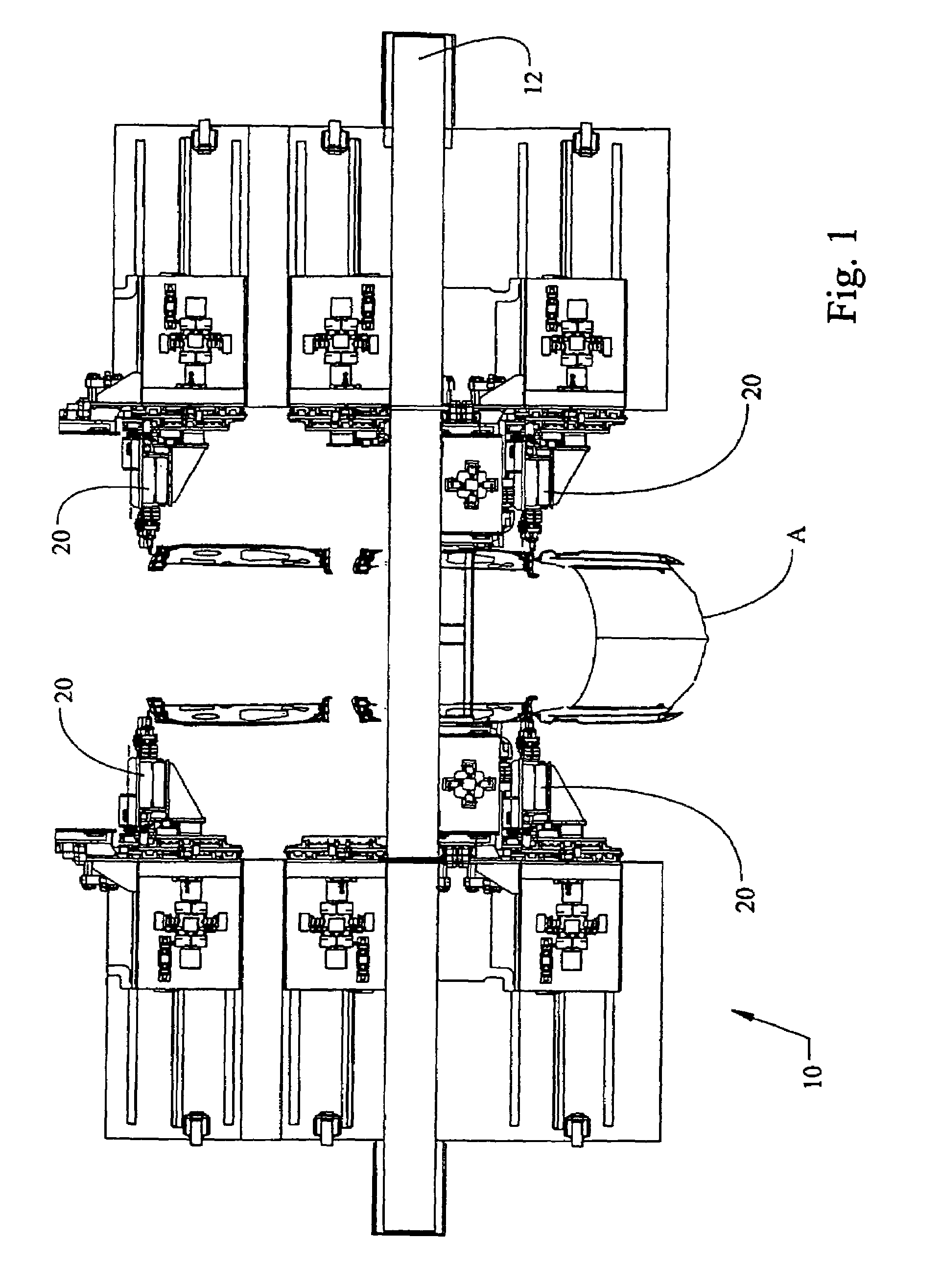Method and apparatus for assembling exterior automotive vehicle body components onto an automotive vehicle body
a technology for automotive body parts and body parts, applied in the direction of manufacturing tools, metal-working machine components, transportation and packaging, etc., can solve the problems of building up inaccuracy of the body-in-white, component creation with certain accuracy and tolerance limits, and inability to achieve a rigid assembly
- Summary
- Abstract
- Description
- Claims
- Application Information
AI Technical Summary
Benefits of technology
Problems solved by technology
Method used
Image
Examples
Embodiment Construction
[0060]Generally shown in the Figures, is a method and apparatus for utilizing position detection apparatuses to locate primary locating points on a vehicle body, also known as a body-in-white. In accordance with the present invention, after the primary locating points have been located and the position detecting apparatus have been locked in place, a set of locator pins and input sockets, one of which is attached to the position detecting apparatus and the other of which is attached to a balancing lever mechanism fixed to the gantry spanning the production line, is used to balance out or average the deviation of the primary locating points in cross-car, fore / aft and up / down directions of the actual body-in-white as built, from design-intent positions. This average or balancing out would obviously not be required if the processing of the body-in-white resulted in all panels and attachment points being actually located at design-intent position after the vehicle body was processed thr...
PUM
| Property | Measurement | Unit |
|---|---|---|
| imprecise distance | aaaaa | aaaaa |
| distance | aaaaa | aaaaa |
| three-dimensional body structure | aaaaa | aaaaa |
Abstract
Description
Claims
Application Information
 Login to View More
Login to View More - R&D
- Intellectual Property
- Life Sciences
- Materials
- Tech Scout
- Unparalleled Data Quality
- Higher Quality Content
- 60% Fewer Hallucinations
Browse by: Latest US Patents, China's latest patents, Technical Efficacy Thesaurus, Application Domain, Technology Topic, Popular Technical Reports.
© 2025 PatSnap. All rights reserved.Legal|Privacy policy|Modern Slavery Act Transparency Statement|Sitemap|About US| Contact US: help@patsnap.com



